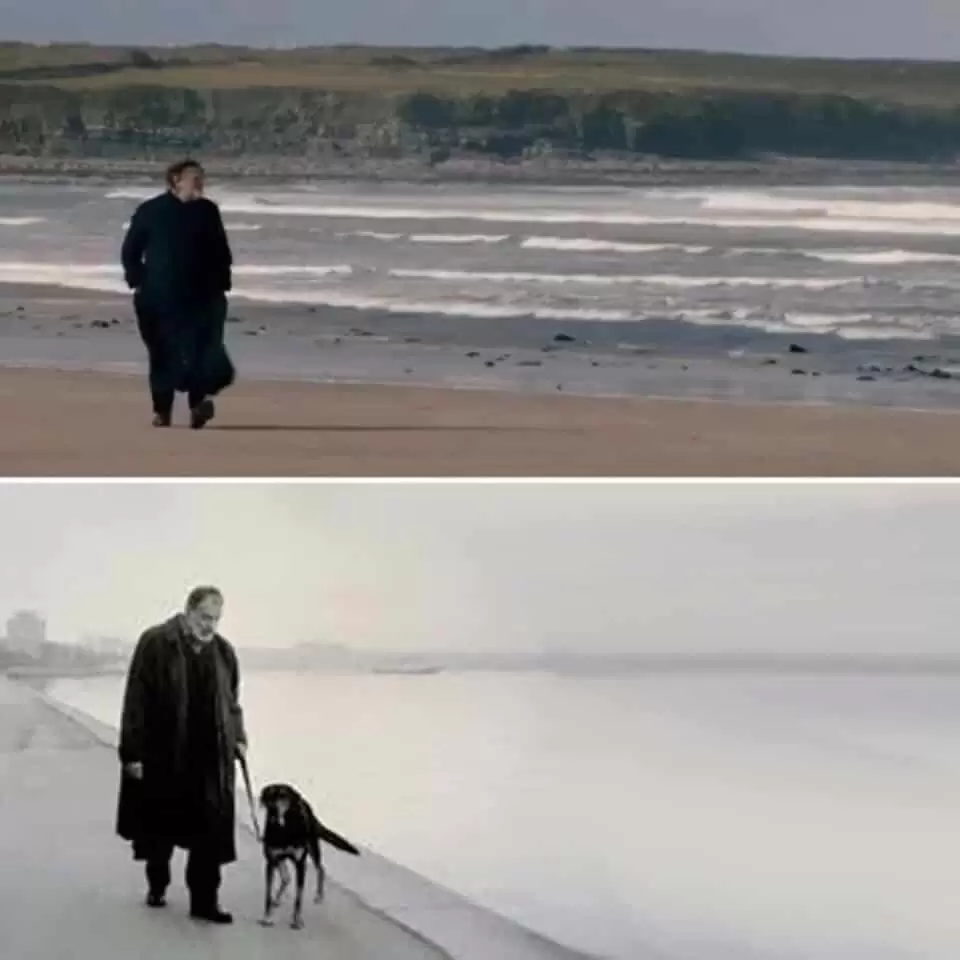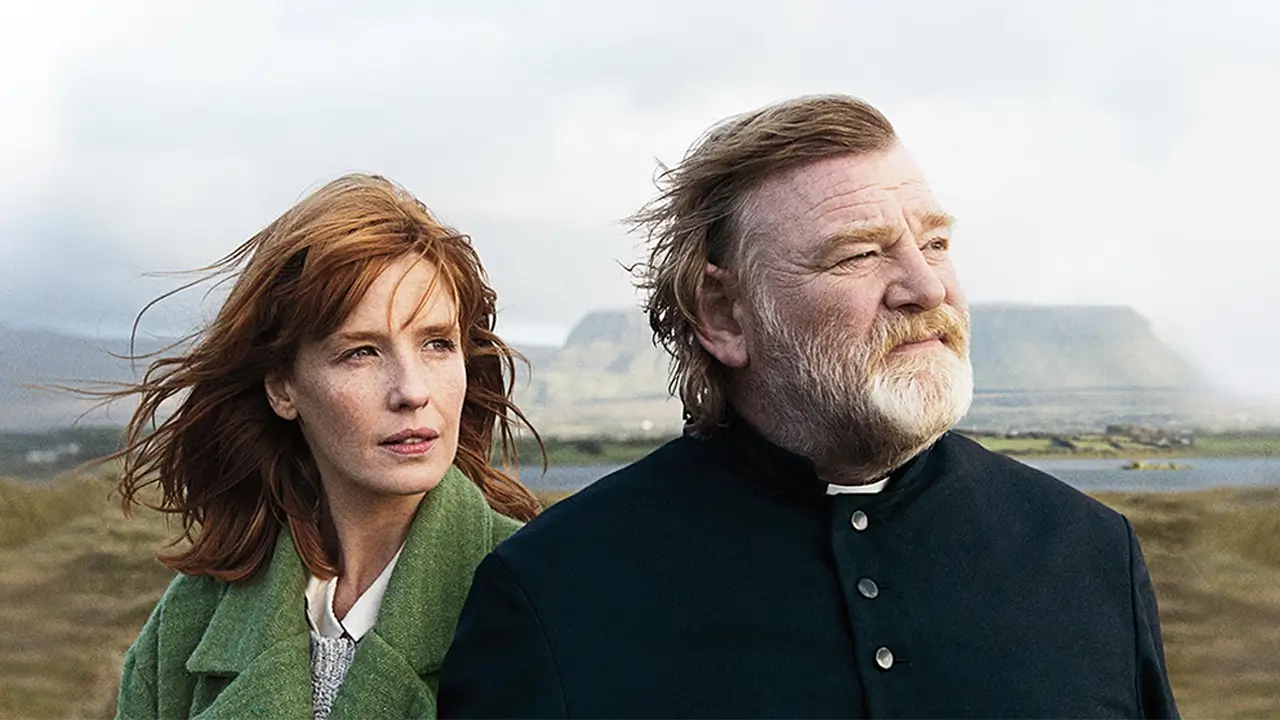Calvary (2014) is a John Michael McDonagh movie.
In traditional congregational societies, clergy are important as they are charged with the task of improving individual and communal welfare. Their confessions in order to provide personal catharsis or their sermons that go as far as determining the life goals of the congregation give them a respectable position vis-à-vis the individuals of the congregation. Community-type societies, in which the traces of clergy and religion-oriented life are found in all cultural, legal, economic and political grounds that determine lifestyles, have been replaced by community-type secular organizations over time as all these grounds began to exist as independent disciplines.[1]
As the view that social welfare can be increased by maximizing individual benefit [2] has been reshaped by the authorities, not only the relations of production, but also the personal and interpersonal patterns of thought based on these relations of production have changed, and the relationship of the individual with himself and society has taken on an artificial form that is created rather than existing.
The process, which evolved in a reciprocal dialectic rather than a unilateral one, led to the breaking of the individual’s natural ties with the society into which he or she was born and with himself or herself. In the midst of such a painful process, we meet James, an altruistic priest dedicated to the good of his community. On a mission to heal social dissociation by relieving the symptoms of individual nothingness, meaninglessness and cynicism, James’ life will begin to change one day when he is threatened with murder during a confession session.
On the Meaninglessness of Hope: Calvary
Calvary opens effectively with an opening that brings to mind The Club (2015), Spotlight (2015) and Doubt (2008), all of which dealt with the role of clergy in cases of sexual abuse. After sharing the story of his sexual abuse at the age of seven with priest James in confession, the man’s desire is neither to be free of this burden nor to be free of the difficulties of living with it; all he wants is to kill James for the priest who raped him.

Apart from the threat of death that would physically eliminate James, the priest who returns to his daily life after the confessional, we realize that he is also facing the destruction of his identity as an outcast from society. The parishioners he meets outside the church, although they don’t hate him, are stereotypical individuals who don’t hesitate to have sarcastic conversations with him and reveal his social dysfunction in every dialog.
Jack the butcher who goes on tirades about the uselessness of the institution of marriage, the waiter who plans to join the army to compensate for his asociality, his anhedonic daughter Fiona who has given up on life, an elderly writer who is waiting for death without any fuss, or James the priest who, despite the loss of his entire family, is narcissistic about his wealth, means nothing to Michael. For Brendan, whose bar is about to be repossessed, the church is even incapable of doing what it is supposed to do.
“Why don’t you tell the parish about the bankers who are ripping everyone off? They’re still throwing people out of their homes because they’re not getting paid. Have you ever heard the congregation talk about this? Aren’t these important issues?”
Calvary
Within the framework of Brendan’s criticism, we see that the religion-state-bank structure does not contribute to social welfare in the aforementioned social order, and even causes new problems for individuals, and that the religious institutions remain silent about all this. It is a real problem for Brendan that religious institutions are far away from the motto of unity against injustice, which can be seen as one of their obligations. Instead of treating the cancerous institutions of the society we were born into, there is nothing respectable about clergymen who glorify the effort to create a false state of well-being for individual salvation by ignoring the problems created by these institutions.
Despite all these thoughts of his congregation, no one has a problem with James except the man who threatened him with death. According to James, who tries to help everyone as much as he can, it is unfortunate that society expects life as well as death to be understandable and fair. Since the basic values that form the beliefs of people are limited to this expectation and the fear of death, it is very easy to lose faith. Thus, the state of meaninglessness is a bottomless pit for individuals.
James, whose desire for a passionate life gradually diminishes throughout the movie, cannot stop himself from falling into the situation he is talking about. For the priest, who feels more and more that he cannot help his parishioners despite all his efforts, his life is doomed to sink into the same swamp of meaninglessness. With his dog, his life on the seaside accompanied by idyllic landscapes where the wind howls, and his state of mind in which his connection to the world becomes more and more disconnected over time, James can be thought to bear a resemblance to the character of Alexandros from Eternity and A Day (1998).

Calvary, a film worth watching for the striking aphorisms in every dialogue between the characters and the scenes that are so visceral with Patrick Cassidy‘s music, manages to convey the fragility of the difference between hope and despair by summarizing the unbearable weight of existence with the following story of Frank the doctor:
“When I got my first job in Dublin, there was a three-year-old boy. His parents brought him to the hospital for a routine operation. But the anesthesiologist made a mistake. The little boy became deaf, dumb and blind. And paralyzed; permanently. Imagine that! Imagine the little boy regaining consciousness. In the dark. You’d be scared, wouldn’t you? You’d be scared, knowing the fear would end. It had to end. It had to end. Your mom and dad had to be close. They would have come to save you. They would turn on the light. They would have talked to you. But think about it. No one is coming to save you. No light is turned on. You’re in the dark. You try to talk but you can’t. You try to move but you can’t move. You try to scream but you can’t hear your own screams. You’re buried inside your own body. Moaning in terror.
Calvary
Further Reading:
[1] According to Tönnies, while the community has “real organic life” and “real, durable means of coexistence” and is “an organism living in itself”, the community, on the other hand, is “a purely mechanical structure existing in the mind”, “a temporary and superficial thing”, “a mechanical aggregation and an artificial phenomenon”.
[2] Aydın, Metin. John Stuart Mill’s Utilitarian Ethics.

